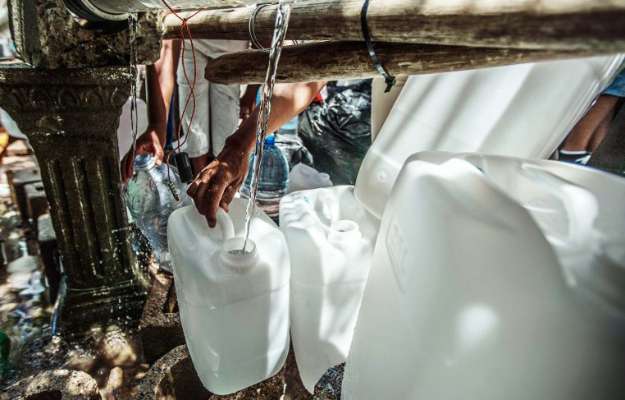Deus ex machina. The only thing that has saved Cape Town, the famed tourist destination in South Africa, from endless queues for drinking water at least immediately is nothing but divine intervention. Rains in catchments of its drinking water reservoirs have pulled the African city from the brink of what was termed ‘Day Zero’.
Reservoirs supplying drinking water to Cape Town, including its largest, the Theewaterskloof, had dried greatly in the two years of drought triggered by El Nino. The change in weather patterns had affected agricultural production and economic growth throughout South Africa, but Cape Town was hit particularly hard and its drinking water crisis has drawn global attention. It was predicted that residents of Cape Town will have to face acute scarcity of drinking water towards the middle of April. Although that dire prediction has now been postponed to a future date in 2019, the city cannot heave a sigh of relief just yet.
Cape Town’s is not an isolated case. Cities around the world are faced with water crises of varying degrees of intensity. If climate change continues to play havoc with the weather, no human conglomeration, urban or otherwise, will be far from facing a ‘Day Zero’.
There is plenty of reason to be worried when statistics, too, are laid out before us. Although 70 per cent of the Earth’s surface is covered by water, less than 3 per cent of this entire quantity is fresh water. At present about a billion people around the world lack access to safe drinking water and 2.7 billion more face water scarcity for at least a month in a year.
The BBC had in February brought out a list of 11 cities globally that are likely to face acute drinking water scarcity. Second on the list was India’s own Silicon Valley Bangalore. The IT hub of India has seen a boom in real estate owing to its position as an ideal destination for information technology giants, both domestic and multinational. The city, though, is struggling to manage its water and sewage systems. Its plumbing is antiquated and according to a Central government report more than half the drinking water supplied in the city is wasted.
Added to the problem of wastage of drinking water, the city is also in the news for pollution of its water bodies. Studies have shown that no water body in the city has water that is suitable even for bathing. An inventory of the city’s lakes has shown that 85 per cent of them had water that could only be used for irrigation or industrial cooling.
The Bellandur Lake is a case in point. If waters of this lake catch fire one day, on other days its water froths and winds carry huge blobs of this mysterious lather over roads, producing a spectacle that gives the loud and clear message that the water body is in dire straits.
Many parts of the country are facing problems associated with availability of drinking water. Some of the major disagreements over the sharing of river waters point to the growing water crisis. If Karnataka, Kerala and Tamil Nadu are still locked in battle over the water of Cauvery, sharing of water of the Mahanadi between Chhattisgarh and Odisha is a bone of contention between these riparian states.
In the case of India, Day Zero would mean something entirely different from what it means for Cape Town. What the South African city means by Day Zero is that its residents, who are even now receiving 24×7 domestic water supply, will only have to line up for drinking water. But in India domestic water supply round the clock is a luxury that isolated parts in some cities enjoy. According to a survey for service Level benchmarking conducted by the ministry of urban development in 28 cities across 14 states and the Union Territory Chandigarh in 2006, on average the daily supply of water was only 3.3 hours. And of the cities covered by the survey, only two (Chandigarh and Thiruvananthapuram) received water for more than 12 hours in a day. In the other cities, the average came to only about two hours.
At 126.4 litres a day per head, the supply of water was way below the benchmark of 135 litres, according to the survey. India also has vast disparities in the distribution of water as there are parts where per capita supply goes to 298 litres a day and there are parts where it dips to as low as 37 litres.
The fact that urban population in India has grown from 286 million in 2001 to 377 million in 2011, is only one factor that has worsened the situation. There are other worrying aspects also as in the instance of Delhi. The Delhi Pollution Control Committee has found that of the 22 sewage treatment plants in the city, the water released from eight failed to meet standards in both Biological Oxygen Demand and Total Suspended Solids. It means that efforts to reuse fresh water that is otherwise sent down the drain are not fructifying.
The problem seeks redressal on an urgent basis. Climate change is pressing us for time and we stand to get caught unawares.
